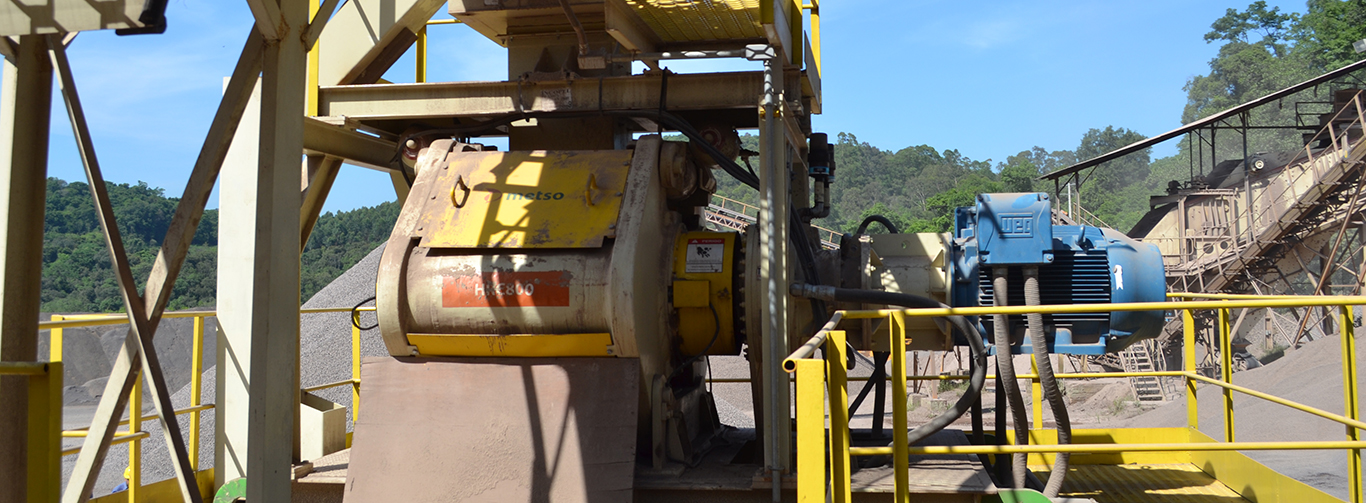The most consumed construction material in the world is concrete. Sand - one of its components - represents 30% of the volume. The extraction of this raw material, however, faces strong environmental constraints, especially in metropolitan areas.
In the case of Incopel, located in Estância Velha, in the metropolitan area of Porto Alegre, Brazil, the subject is more than current, and the company decided to invest in the production of manufactured sand.
Two years ago, the company faced a production excess of gravel with particle sizes of 7/8 and 3/8. With customers consisting of construction companies and concrete artifact manufacturers, Incopel identified a business opportunity. Due to the limitations of natural sand extraction in the region, the price of this raw material has risen from R$40 / m3 to R$100 / m3.
“We were evaluating how to use the excess of 7/8 and 3/8”, explains Jorge Felippe Gewehr, director of Incopel. “But the combination of environmental restrictions on the exploitation of natural sand with the consequent increase in price made us decide on the installation of a manufactured sand production plant,” he summarizes.
Relying on HPGR technology
With the decision, Incopel evaluated several alternative techniques, deciding on the activation of a unit consisting of Metso’s HRC™ 800 High Pressure Grinding Roll (HPGR), combined with a Nordberg® TS3.3 banana screen. “It is a vision that is starting to become real thanks to the quality of the final products and customer evaluation,” explains Gewehr.
Started in May 2014, the new unit is fed by a mix of 7/8 gravel (70% of volume) and 3/8 gravel (30%). The material transported by 18-ton trucks travels 200 meters to the feeder opening that supplies – via conveyor belt – the HRC. With a nominal capacity of 120 tons / hour, the equipment can have its settings (pressure and speed) quickly changed. Pressure adjustment directly influences the final particle size, while speed influences the amount of material processed by the crusher.
The energy efficient HRC 800 consumes on average about 48% of the power provided by two 150 cc engines, sending the crushed material to a TS3.3 screen with three decks, which runs classification as specified in the project. In trials, Incopel has reached production peaks of 126 tons / hour. This corresponds to a consumption of 0.84kW / ton of final product in the crusher. With elliptical motion, this screen is characterized by excellent stratification and high screening efficiency. Due to its decreasing transport speed (not continuous as in conventional equipment), the unit submits the crushed product to classification where time and surface are greater resulting in a selection of particles with similar sizes.
Metso laboratory provides support
The Incopel plant produces three final products. The first is ½-inch gravel used to manufacture concrete poles and road paving. ¼ gravel is the second classified product used mainly to manufacture concrete pipes for basic sanitation and in the concrete artifact market such as interlocking blocks. “With the advantage of saving cement, according to my own clients,” adds Gewehr. On the other hand, manufactured sand, the third product, supplies the concrete producer market, and tube and concrete manufacturers, among the main segments.
The definition of the three products manufactured in Incopel’s new line not only involved the company’s own knowledge, but also Metso crushing laboratory resources, located in Sorocaba, São Paulo. In addition to basalt mined by the quarry, Metso technicians evaluated the initial mixture feeding the HRC 800 and the three final products. The result was a graph showing the particle size in the classification stage.
Operationally, the line is controlled by a single professional. Alexandre Erthal, who has been working for Incopel for 15 years, is responsible for equipment activation, HRC 800 and screen inspection and system controls. The brain of the process is the control center, enclosed in a concrete room with windows. It is from there that Erthal triggers the circuit and monitors the indicators from the plant via a touch screen.
“It works like a cell phone screen. It’s easy and intuitive”, he says. Today the biggest concern is the inspection of the conveyor belts that transport the crushed material, mainly the roller alignment. “Noise is minimal,” he adds.
Better concrete consistency
Jorge Felippe Gewehr identified the potential market of manufactured sand, but the proximity of the demand was a surprise. A neighboring concrete producer is the most active customer, purchasing four trucks a day of manufactured sand for the production of concrete pipes and interlocking blocks used in the installation of floors. “He complained about natural sand inconsistency that led to the production of concrete with highly variable strength,” explains the director of Incopel. Since the adoption of manufactured sand, the customer, and neighbor, praises the consistency in particle size and cubicity, factors that increase concrete strength.
Even more surprising was the evaluation of another buyer focused on the acquisition of ¼ gravel. When visiting the HRC 800 line, he picked up a handful of gravel and amazed by its quality, summarized: “This material is pure gem”.
